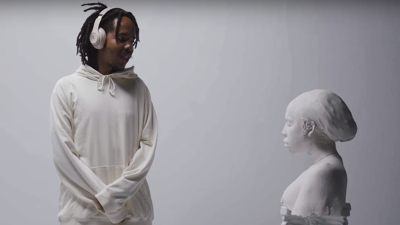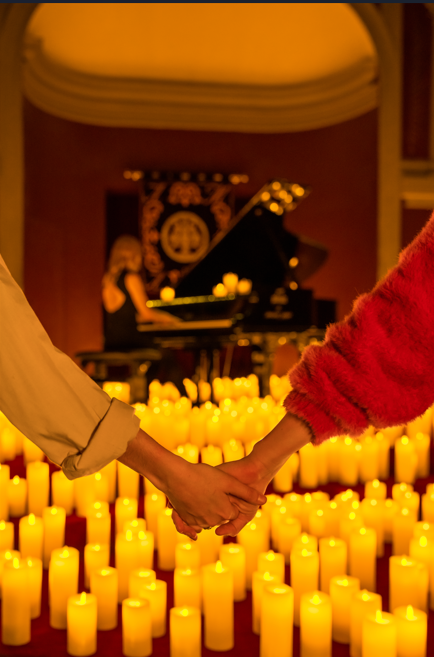Is the Tupac hologram overrated?

text: Michael Raine
By now, anyone with an Internet connection or cable subscription has seen the recent awe-inspiring/cringe-inducing virtual resurrection of Tupac Shakur. When an eerily realistic hologram of the late rap icon appeared onstage at the Coachella Music Festival to perform with the still-living (I presume) Snoop Dogg and Dr. Dre, the reaction, predictably, was one of amazement. But almost as quickly, that initial amazement turned into sober reconsideration about the ethical and economic ramifications of resurrecting dead icons as virtual marionettes.
Of course, in this era of instant reaction, every media outlet, from the New York Times and Toronto Star to Business Week magazine, were quick to speculate what this hologram technology signified for the future of live music and, in particular, for the possibility of staging completely virtual concert tours. However, what a lot of the speculation has missed is that, 1) the technology is new but the ethics surrounding the use of this technology are not, and 2) holograms are more likely to have a greater impact on the film industry than the music industry.
First, the ethical issues arising from the manipulation of either actions or words of the dead, have been debated for decades. Sure, the Tupac hologram brought back a deceased person in a way that is more convincing to the eyes and ears than we’ve seen before, but the basic concept is old. In regards to the Tupac performance, one thing that many viewers found eeriest and most thought provoking was when the hologram gave a shout-out of the audience, yelling, “What the fuck is up, Coachella!”.
Considering that Tupac was killed in 1996 and the first Coachella Music Festival wasn’t staged until three years later, this is a phrase the rapper likely never uttered. Whereas most of the performance is merely a past Tupac performance re-engineered as a hologram – essentially an old concert film entered into a new medium – the shout-out to Coachella is the most debatable aspect from an ethical standpoint.
Making a dead person say something they actually never said is possibly the most controversial form of manipulating the past. There is certainly a worthwhile ethical debate to be had with regards to putting words into the mouths of the dead. But if we’re upset about a virtual Tupac saying something as mundane as “What the fuck is up, Coachella!”, then why weren’t movie audiences outraged when Tom Hanks, as Forrest Gump, inspired John Lennon to write Imagine? Yes, you might say, but the producers of Forrest Gump aren’t claiming the Forrest Gump-John Lennon encounter actually happened. But neither are Snoop Dogg and the executors of the Tupac estate claiming the dead icon was actually on-stage at Coachella.
I’m not trying to diminish the very real ethical dilemma surrounding the use of technology to manipulate the words and actions of the dead. But what I’m saying is the Tupac hologram – though eye-popping in its technological advancement – was a pretty uninteresting example of this from an ethical standpoint.
A much more interesting example of such manipulation occurred in 2008. Again, John Lennon’s words were manipulated (with Yoko Ono’s approval) but this time in a TV ad promoting the One Laptop Per Child charity campaign. The late-Beatle “says” in the commercial, among other things, “You can give a child more than a laptop and more than imagine, you can change the world.” Like the Tupac hologram, this sentence was likely never uttered by Lennon because laptops didn’t exist in his lifetime. But isn’t manipulating Lennon’s words in support of a social cause much more ethically questionable than having Tupac give a shout-out to a concert audience? Yes, many in the media and the public voiced their unease with the use of Lennon’s image and words in the OLPC ad, but not to the extent that anything was done to prevent it from happening again. The same could be said of Fred Astaire dancing with a Dirt Devil vacuum in a 1997 ad.
As such, we as a society condoned, or at least tolerated, the practice and assured it would continue. So just because it’s now a hologram rather than a 2D TV image manipulating the dead’s words and actions, why should we act surprised or concerned? We knew such manipulation had occurred before, and we knew holograms were a reality. It didn’t take much imagination to realize the two would meet at some point.
Another issue of great speculation and debate brought on by the Tupac hologram is; what does this mean for the future of concerts? After all, it didn’t take long for people to speculate that the Tupac hologram – or holograms of Jimi Hendrix, Michael Jackson, etc. – would go on tour. So what does this mean for the future of live music? In short, very little.
Aside from the fact they both involve music, there is little similarity between a hologram performance and an actual live concert. The Globe and Mail’s J. Kelly Nestruck wrote a very good article dissecting the increasingly blurry line between live and seemingly-live musical performance. However, such an argument presupposes that the hologram performance’s next of kin is a live concert.
It appears (to me at least) that the proposed hologram concert tours would have more in common with film than live music. The same way a Broadway production more closely resembles a concert than a movie, a hologram more closely resembles a movie than a concert. Sure, people would fill arenas and stadiums to watch a hologram of Jimi Hendrix burn its virtual guitar, but the only thing live about this experience would be the audience. Likewise, there is nothing live about a movie other than the audience. So why should the venue matter? Whether in an arena or theatre, you’d still be watching a pre-taped and edited projection.
The Jonas Brothers, the cast of Glee, and U2 have all released 3D concert films and no one claimed they could replace actual live concerts. Isn’t a hologram concert just the next logical step? Plus, no matter how good the hologram technology becomes, nobody with even a modest grip on reality would think they’re actually watching Jimi Hendrix. The audience could suspend reality for an hour and half and become immersed in the experience – as movie audiences do – but they’re not going to feel that the experience is the equivalent of having seen Jimi Hendrix while he was alive.
As well, the creators of the hologram technology will not be satisfied with just creating single individuals that can be projected on a stage. They’ll want to create entire worlds, the same way James Cameron did with 3D technology in Avatar. And virtual worlds are not created for concerts, they’re created for movies. It’s no coincidence that the hologram technology used in the Tupac performance was partially developed by Cameron’s visual effects and animation company, Digital Domain.
So while tour promoters may be salivating at the thought of staging a Jimi Hendrix and Janis Joplin world tour, living musicians have little to worry about. After all, it’s not the music industry that saw a glimpse of the future on the Coachella stage, it’s the film industry.
In our rush to judge the merits of a new technology, we shouldn’t let it blind us to the ethical lessons of the past or, likewise, give us tunnel vision, rendering us unable to see where it is logically headed. After all, ethics don’t change overnight and an innovation’s starting point is rarely also its end point.













